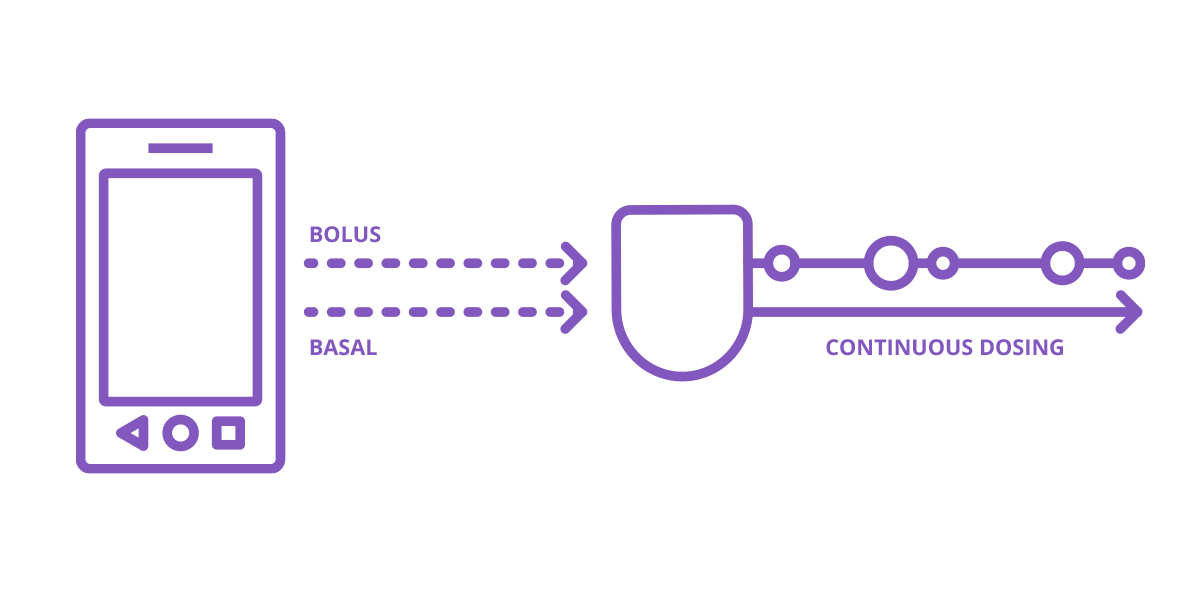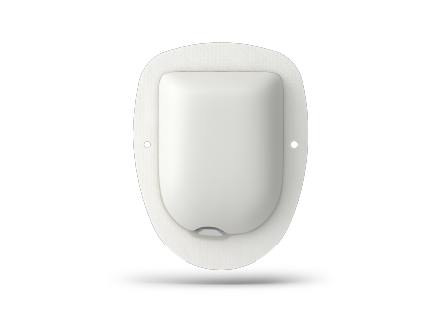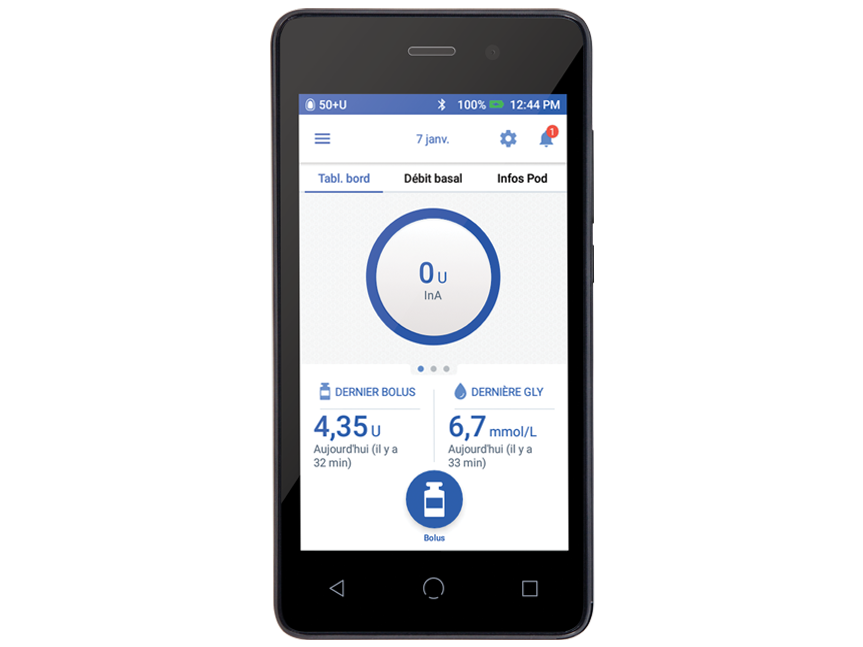What Is Insulin Pod Therapy?
If you have been through our first module, you will know more about what an insulin pump is, and how it can help with your type 1 diabetes management.
You will also now understand that there are different types of Insulin Pumps – tethered pumps or tubeless pumps.
In this module we are going to find out more about “Pod Therapy” with Omnipod®.
Pod Therapy is a specific type of insulin pump therapy that offers all the benefits of continuous insulin delivery, through a tubeless Pod worn on your body.
Want to know more? Let’s take a look…
What Is Insulin Pod Therapy?
Pod Therapy is a type of insulin therapy, which the Omnipod tubeless insulin therapy system is.
Pod Therapy uses a small, lightweight, wearable device called a Pod to deliver insulin, which is controlled wirelessly from a separate handheld device, called a Personal Diabetes Manager or PDM.
Pod Therapy offers you continuous insulin delivery without multiple daily injections or the tubing associated with traditional insulin pumps.
The wearable, waterproof† Pod includes a small, flexible cannula that inserts automatically with the push of a button on the PDM.
The Pod delivers personalized doses of insulin into your body through the cannula, based on your personal settings that you program into your PDM.
How does Pod Therapy Work?
Rather than multiple daily injections, or a traditional tubed insulin pump, Pod Therapy delivers insulin via a discreet, wearable Pod.
Each Pod is filled with up to 200 units of insulin and can be worn for up to three days (72 hours) of continuous insulin delivery, before you replace it with a new one.
You can place the Pod on your body almost anywhere you would inject insulin.
Bolus insulin is delivered wirelessly§ in just a few taps from the PDM.


The Pod


The Pod is a small, tubeless, wearable and waterproof† device that you fill with insulin and wear directly on your body, with an adhesive.
The Pod delivers insulin via a small, flexible cannula that inserts automatically with the push of a button on the PDM, meaning you never have to see the needle.
The Pod communicates wirelessly§ with the Omnipod DASH® PDM to schedule insulin delivery.
Is it easy to apply the Pod?
In a word… yes! Just three simple steps and you’re set for up to three days (72 hours) of continuous insulin delivery.
Step 1. Fill the Pod.
The Pod automatically primes itself and performs a series of safety checks to prepare for insulin delivery.
Step 2. Apply the Pod.
Place your Pod almost anywhere you would give yourself an injection.
Step 3. Press Start.
The cannula inserts automatically and insulin delivery begins at the touch of a button.
The Omnipod DASH® PDM


You’re in control with different PDM features.
- You can set a Zero Basal Rate if you require low insulin delivery.
- You can set Fractional Insulin to Carb Ratios (0.1g/U) if you are insulin sensitive.
- The Pod Site Tracker tracks your Pod site locations, helping with site rotation.
- You can set various presets on the Omnipod® PDM to establish favourites, tag your activities and personalize insulin delivery based on your daily routine.
Key Benefits of Pod Therapy
Tubeless.
Feel the freedom from being tubeless.
Discreet.
Small enough to be worn under your favourite outfit!
Less mealtime maths.
Reduce the burden of working out bolus doses with the PDM's built-in Bolus Calculator - perfect for dinner with friends!
Waterproof†.
Wear the Pod fuss-free in the shower or pool - and even on your beach holiday.
No multiple daily injections.
Each tubeless Pod delivers up to 3 days (72 hours) of continuous insulin, replacing the need for multiple daily insulin injections.
Easy to use.
Each Pod is easy to apply and insertion is quick and virtually painless.
Convenient.
Quickly and remotely** make adjustments to your insulin dose via your Omnipod® Personal Diabetes Manager (PDM).
Technology that looks the part.
The wireless Omnipod® PDM looks like a smartphone and fits into your pocket, purse or backpack.
Fine tune insulin delivery.
Deliver personalized insulin accurately wherever you are, with doses in 0.05 unit increments.
Related Articles
References and Disclaimers
These modules are not a replacement for medical advice or training. Please always speak to a qualified healthcare professional about your options. Refer to the Omnipod DASH® Insulin Management System User Guide for complete safety information including indications, contraindications, warnings, cautions and instructions.
The information and other content provided in this article, or in any linked materials, are not intended and should not be construed as medical advice, nor is the information a substitute for professional medical expertise or treatment. If you or any other person has a medical question or concern, you should consult with your healthcare provider. Never disregard professional medical advice or delay in seeking it because of something that have read on this blog or in any linked materials. If you think you may have a medical emergency, call your doctor or emergency services immediately. The opinions and views expressed on this blog and website have no relation to those of any academic, hospital, health practice or other institution.
1. Ravi Retnakaran, Jackie Hochman, J. Hans DeVries, Helene Hanaire-Broutin, Robert J. Heine, Vincent Melki, Bernard Zinman; Continuous Subcutaneous Insulin Infusion Versus Multiple Daily Injections: The impact of baseline A1c. Diabetes Care 1 November 2004; 27 (11): 2590–2596. https://doi.org/10.2337/diacare.27.11.2590
2. Walsh J, Roberts R. Pumping Insulin. 6th ed. San Diego, CA: Torrey Pines Press; 2017.
3. JDRF. (2023, August 22). Insulin pumps. jdrf.org.uk/information-support/treatments-technologies/insulin-pumps. Retrieved March 13, 2024, from https://jdrf.org.uk/information-support/treatments-technologies/insulin-pumps/#:~:text=What%20is%20an%20insulin%20pump,down%20high%20blood%20glucose%20levels.
4. Jill Weissberg-Benchell, Jeanne Antisdel-Lomaglio, Roopa Seshadri; Insulin Pump Therapy: A meta-analysis. Diabetes Care 1 April 2003; 26 (4): 1079–1087. https://doi.org/10.2337/diacare.26.4.1079



